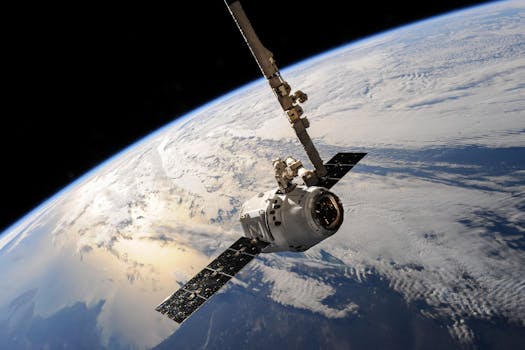
MEO Satellites: Introduction to Medium Earth Orbit Technology
MEO satellites, or Medium Earth Orbit satellites, are a type of satellite that operates in a medium earth orbit, which is approximately 2,000 to 36,000 kilometers above the earth’s surface. This orbit is higher than the low earth orbit (LEO) used by many commercial satellites, but lower than the geostationary orbit (GEO) used by traditional telecommunications satellites. The unique characteristics of MEO satellites make them an attractive option for a variety of applications, including global communication, navigation, and remote sensing.
Advantages of MEO Satellites
MEO satellites have several advantages over other types of satellites. One of the main benefits is their ability to provide global coverage with fewer satellites. Because MEO satellites are in a higher orbit than LEO satellites, they can see more of the earth’s surface at any given time, which means fewer satellites are needed to provide global coverage. This reduces the cost and complexity of launching and operating a satellite constellation. Additionally, MEO satellites have a lower latency than GEO satellites, which makes them more suitable for real-time communication applications.
Applications of MEO Satellites
MEO satellites have a wide range of applications, including global communication, navigation, and remote sensing. In the area of global communication, MEO satellites are used to provide broadband internet access, mobile phone coverage, and other telecommunications services. They are particularly useful in areas where it is difficult or impossible to install traditional telecommunications infrastructure, such as in remote or developing regions. MEO satellites are also used for navigation, providing location information and timing signals for a variety of applications, including aviation, maritime, and land transportation.
Examples of MEO Satellites
There are several examples of MEO satellites in operation today. One of the most well-known is the O3b satellite constellation, which was launched in 2013 to provide broadband internet access to developing regions. The O3b constellation consists of 20 MEO satellites that orbit the earth at an altitude of approximately 8,000 kilometers. Another example is the IRNSS (Indian Regional Navigation Satellite System) constellation, which was launched in 2016 to provide navigation services to the Indian subcontinent. The IRNSS constellation consists of 7 MEO satellites that orbit the earth at an altitude of approximately 36,000 kilometers.
Conclusion
In conclusion, MEO satellites are an important part of the global satellite industry, offering a unique combination of coverage, capacity, and performance. Their ability to provide global coverage with fewer satellites, lower latency, and higher capacity makes them an attractive option for a variety of applications, including global communication, navigation, and remote sensing. As the demand for satellite-based services continues to grow, it is likely that MEO satellites will play an increasingly important role in meeting this demand.
Future of MEO Satellites
The future of MEO satellites looks bright, with several new constellations planned for launch in the coming years. One of the most ambitious is the OneWeb constellation, which will consist of over 600 MEO satellites and provide global broadband internet access. Another example is the SpaceX Starlink constellation, which will consist of over 12,000 MEO satellites and provide global broadband internet access. These new constellations will provide faster and more reliable connections, and will help to bridge the digital divide between developed and developing regions.
Challenges and Opportunities
Despite the many advantages of MEO satellites, there are also several challenges and opportunities that must be addressed. One of the main challenges is the issue of orbital congestion, which is becoming increasingly problematic as more and more satellites are launched into medium earth orbit. This can increase the risk of collisions and interfere with the operation of other satellites. Another challenge is the issue of regulatory frameworks, which are still evolving and can be complex and inconsistent. However, these challenges also present opportunities for innovation and growth, as companies and governments work to develop new technologies and policies to address these issues.
Conclusion
In conclusion, MEO satellites are a critical part of the global satellite industry, offering a unique combination of coverage, capacity, and performance. As the demand for satellite-based services continues to grow, it is likely that MEO satellites will play an increasingly important role in meeting this demand. With their ability to provide global coverage with fewer satellites, lower latency, and higher capacity, MEO satellites are an attractive option for a variety of applications, including global communication, navigation, and remote sensing. As the industry continues to evolve, it is likely that MEO satellites will play a key role in shaping the future of satellite technology.